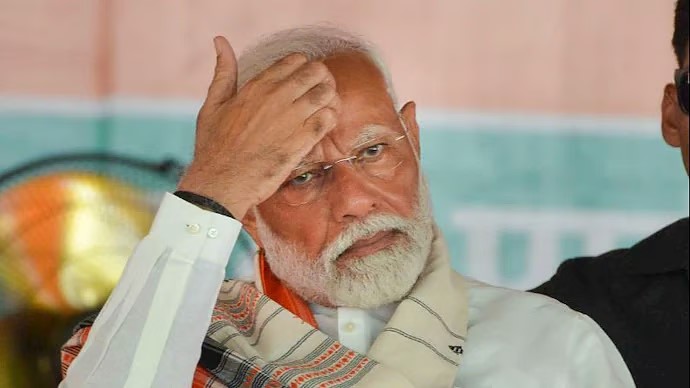The absence of a logical explanation for the ceasefire has created serious doubts in the minds of the people that the Modi govt did so under pressure

The ceasefire after Operation Sindoor will go down in Indian history as a dynamic episode that has not only broken the myth called Narendra Modi but also underlined the limits of an industry-manufactured personality cult. This episode had the potential to put Modi among the great leaders of this century, but, alas, he could not transcend his own limitations as a leader. The Modi government had launched Operation Sindoor to teach Pakistan a lesson so that India would not face an ugly war of terrorism in the future and innocent lives would not be lost. But the sudden declaration of a ceasefire, without any logical reasoning, has disappointed not only Indians at large but also Modi’s own staunch supporters because this was done at a time when the Indian army was dominating the war and inflicting serious damage on Pakistan.
The absence of a logical explanation for the ceasefire has created serious doubts in the minds of the people that the Modi government did so under pressure and, in the process, compromised national interest, which has led to serious loss of credibility and trust in his leadership. In the past eleven years, Modi and his team have created an aura around him of a leader with exceptional qualities who is destined to make India great again. For his supporters and party sympathisers, he was a god-like figure who could commit no wrong. But the ceasefire has dented his image as a strong leader, and from now on he will be walking on a very slippery slope. It will be a miracle if he could ever again attain his original image.
Friedrich Nietzsche and Max Weber, two of the greatest thinkers who have analysed and written extensively on the role of an individual in history-making, believed that such leaders are bestowed with ‘supernatural’ qualities, which make them charismatic and superhuman. Both the thinkers, while writing about the personality cult, had emphasised one personality trait in such leaders, that is, transcending conventional wisdom and going beyond the normal.
Modi, since becoming the prime minister, has tried to break every convention and projected himself as a leader who is not constrained by the normal. When India was faced with a terror attack in Uri, he launched a surgical strike, and it was sold to Indian voters as something that had never been attempted in the past by any prime minister. He showcased himself as a leader who was a redeemer and who would free India from the scourge of terrorism. It is to polish this image that propaganda was unleashed that India under him had changed and now the job was to teach terrorists and their godfather a lesson; India would not hesitate to cross the Line of Control and demolish terrorist hideouts. This one simple act put him in a different league of leaders. It’s a different matter that sceptics had been parroting that there was nothing exceptional about the surgical strike and it had been carried out often in the past, though, of course, not publicised on such a grand scale.
A similar rhetoric was repeated when 40 CRPF jawans were killed by a terrorist attack in Pulwama and India carried out the Balakot strike to destroy terrorists’ launch pads in PoK. This was tom-tommed as ‘Ghar me ghus ke mara (we attacked them in their house)’. Modi, with the exalted image of ‘Strong Man’, won the elections with 303 seats, with an increase of more than 6% vote share.
When the terrorists struck with a grave tragedy in Pahalgam on April 22, the whole nation, wisened by the past two surgical strikes, expected that now Pakistan would be taught such a lesson by Modi that it would never dare do the same again. India was greatly wounded. It was psychologically scarred like never before. Citizens anticipated a 1971 kind of response. On May 7, Indian forces destroyed nine terrorist hideouts in a retaliatory strike, and the nation was on a high. India had crossed the Rubicon, as four of the strikes were in Pakistan. On May 10, it struck nine airbases of the Pakistan army with great precision. This was potentially the Bangladesh moment. The Indian army was dominating, and Pakistan was on the defensive. But the nation was shocked by US President Trump’s social media post that he had successfully mediated a ceasefire between India and Pakistan.
The nation was shocked; it felt let down. The citizens could not comprehend that Modi could withdraw under American pressure at a time when, in popular perception, the Indian army was on the verge of inflicting Pakistan a fatal blow. The ceasefire tragically wounded the Indian nation. And Modi’s image of a superman was damaged irreparably.
Modi could not capture Hafiz Sayed and Azhar Masood. In 1971, India has successfully broken Pakistan into two. India had forced the Pakistan army to surrender with over 93,000 prisoners of war and created a new country, Bangladesh. But this time, there was nothing substantial to feel proud of except for having damaged Pakistan airfields and air defence systems. What added insult to injury was the fact that the Indian Air Force lost its fighter jets in the operation. These are not deeds of a superman. No wonder, after the ceasefire, the Prime Minister’s rhetoric, to retrieve his loss of image, fell on deaf ears. His fury felt hollow and shrill. The leader who claimed to be non-biological now proved to have feet of clay. If the 2024 election underlined the limits of Hindutva after the Ram Mandir consecration, then the ceasefire has burst the myth of a great leader and the redeemer of a Hindu nation. It has inflicted a serious blow to the BJP’s masculine nationalism.
-- FPJ